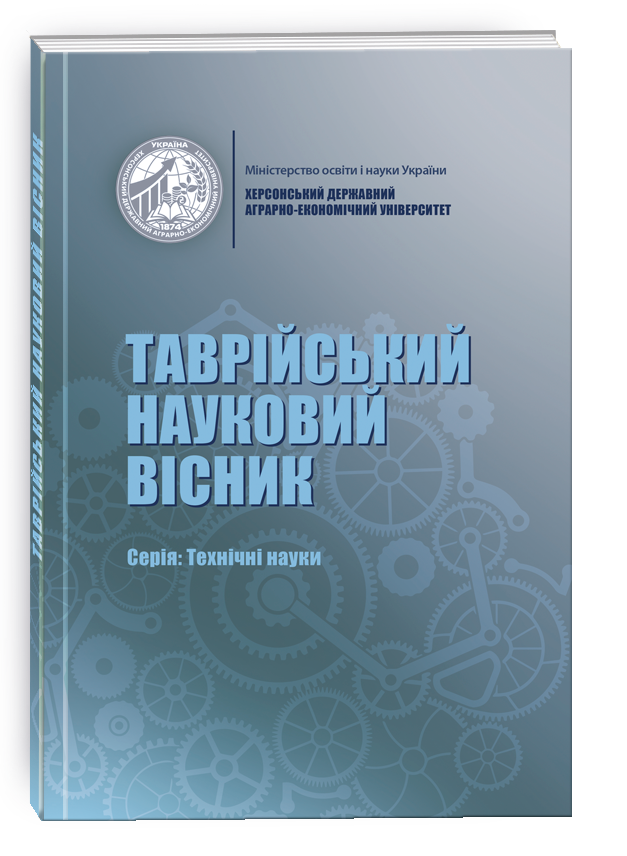ОБГРУНТУВАННЯ ШЛЯХІВ УДОСКОНАЛЕННЯ МЕТОДІВ ЗАВАДОСТІЙКОГО КОДУВАННЯ
DOI:
https://doi.org/10.32782/tnv-tech.2023.2.8Ключові слова:
методи завадостійкого кодування, турбокод, мʼяке кодування, каскадно-кодова конструкціяАнотація
Передача інформації має велику цінність у багатьох сферах життя, технології, науки та комунікацій. А безпомилкова передача інформації забезпечує надійність та точність отриманої інформації. Це особливо важливо в критичних ситуаціях, наприклад, в медицині, авіації, фінансових транзакціях, де навіть невеликі помилки можуть мати серйозні наслідки. Крім того безпомилкова передача інформації дозволяє економити ресурси, такі як пропускна здатність мережі, енергія та час, що особливо актуально у сферах зв’язку, де обмежені ресурси повинні бути ефективно використані для передачі великих обсягів даних. В сучасному швидкому темпі життя, швидкість та ефективність комунікації мають вирішальне значення, оскільки безпомилкова передача інформації дозволяє ефективно використовувати її без необхідності витрачати час і зусилля на виправлення помилок або повторну передачу. В даній статті проводиться аналіз та порівняльні дослідження відомих методів помилково-коригуючого кодування інформації, аргументуються критерії та показники їх ефективності. Вивчаються методи побудови каскадних кодових конструкцій, обґрунтовуються перспективні шляхи їх подальшого вдосконалення. Аналіз і порівняльні дослідження відомих методів завадостійкого кодування виявили науково-технічне протиріччя між поточним станом науково-методичного апарату теорії завадостійкого кодування, можливостями застосовуваних систем корекції помилок кодів, існуючими методами та алгоритмами п завадостійкого кодування (декодування) і вимогами до властивостей, необхідних для практичних застосувань забезпечення заданого рівня помилковозахищеності передачі дискретних повідомлень в телекомунікаційних системах і мережах спеціального призначення, включаючи системи управління та зв’язку. Проведені дослідження показали, що розробка перспективних каскадних кодових конструкцій з удосконаленими властивостями, отриманих шляхом каскадування лінійних блокових кодів з швидкими алгоритмами м’якого декодування та ітеративним обміном отриманими рішеннями, може розв’язати виявлену проблему. З одного боку, цей підхід дозволяє зберегти ідеологію турбо-кодування, тобто реалізувати обмін м’якими рішеннями в ітеративному багатокроковому процесі декодування, що забезпечує високу енергоефективність завадостійкого коду. З іншого боку, такий підхід дозволить значно знизити складність реалізації алгоритмів декодування, що разом із високою енергоефективністю дозволить використовувати цей клас каскадних кодів у телекомунікаційних системах і мережах спеціального призначення, включаючи системи управління та зв’язку.
Посилання
Бойко Ю. М., Дружинін, В. А., Толюпа, С. В. Теоретичні аспекти підвищення завадостійкості й ефективності обробки сигналів в радіотехнічних пристроях та засобах телекомунікаційних систем за наявності завад : монографія. Київ : Логос, 2018.
Бойко Ю.М., Пятін І.С. Моделі систем завадостійкого кодування у телекомунікаціях. Вісник Хмельницького національного університету. № (4). С. 174–183
Berkman L., Turovsky O., Kyrpach L., Varfolomeeva O., Dmytrenko V., Pokotylo O. Analyzing the code structures of multidimensional signals for a continuous information transmission channel. Eastern-European Journal of Enterprise Technologies. 2021. Vol. 5. №. 9. Р. 70–81. URL: https://doi.org/10.15587/1729-4061.2021.242357
Березюк І., Зубенко В. Удосконалення методу м’якого декодування з використанням упорядкованих підмножин перевірочних рівнянь лінійних блокових кодів. Scientific practice: modern and classical research methods: Collection of scientific papers “LOGOS” with Proceedings of the I International Scientific and Practical Conference. 2021. Volume. 1, Pp. 195–201. Boston – Vinnytsia : Primedia eLaunch & European Scientific Platform.
Приходько С.И., Гусев С.А., Зубенко В.А. Исследование методов построения каскадных кодовых конструкций для повышения помехоустойчивости передачи дискретних сообщений. Системи управління, навігації та зв’язку. 2011. № (17). С. 219–224
Зубенко, В.О., Мірошніченко, М.С. () Підвищенння завадостійкості передачі дискретних повідомлень на основі використання каскадно-кодових конструкцій. Автоматика та комп’ютерно-інтегровані технології у промисловості, телекомунікаціях, енергетиці та транспорті : матеріали всеукраїнської науково-практичної інтернет-конференції. 2017. Pp. 58–60. (16–17 листопада, 2017, Кропивницький).
Хмельницький Ю. В., Каблуков О. А. Методи та засоби забезпечення завадостійкої передачі інформації в телекомунікаційних мережах. Збірник наукових праць Військового інституту Київського національного університету імені Тараса Шевченка. 2019. № (64). Р. 133–143.
Proakis D.G. Digital Communications. McGraw-Hill Science / Engineering / Math; 4th edition. August 15, 2000. 1024 p.
Kushnir M., Semenko A., Kosovan G., Bokla N., & Shestopal Y. Increasing the Cryptosecurity of Telecommunication Systems with Spread Spectrum by Using Pseudorandom Sequences Based on Two Ergodic Chaotic Signals. In 3rd International Conference on Advanced Information and Communications Technologies. AICT 2019 – Proceedings. 2019. P. 455–458. Institute of Electrical and Electronics Engineers Inc.







